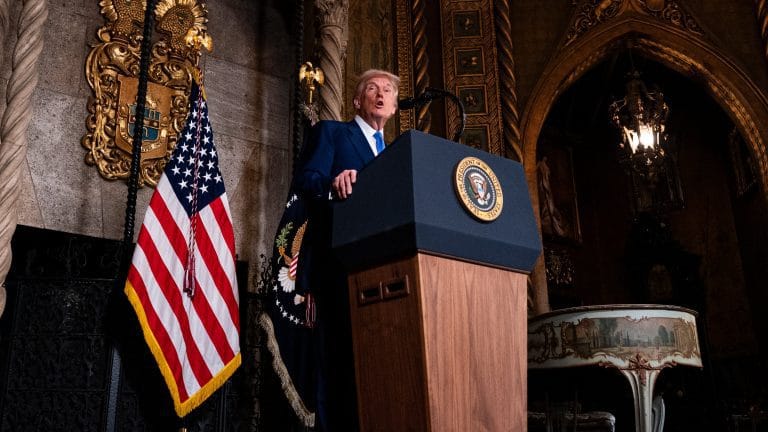🎧 Listen to This Article
Former President Donald Trump’s proposal to eliminate the federal income tax in favor of universal tariffs on imported goods is stirring both economic and political intrigue. The idea represents a seismic shift in how the federal government would be funded, which could radically alter who bears the most significant financial burden, particularly among the so-called “rich.”
Though “rich” is subjective, one standard measure pegs it at roughly double the median household income. Based on recent state-level income data, that threshold ranges widely, from around $188,000 in some Southern states to over $370,000 in affluent coastal regions. This variability reflects the regional cost of living and how federal tax policy affects Americans differently across geography and income.
A Flat Tax Disguised as a Price Tag
While the current federal income tax system is steeply progressive, taxing higher earners at significantly higher rates, a tariff acts more like a consumption tax. It does not scale with income. It scales with spending. And lower- and middle-income households spend a larger portion of their earnings on goods, including imported ones.
Under such a plan, wealthy households that save or invest a greater share of their income, especially in domestic assets, could see their tax burden shrink dramatically. However, average earners could see higher everyday costs for everything from food to fuel to electronics.
Regional Rifts Widen
The shift from income tax to tariff-based revenue would sharpen disparities in a country already divided by the cost of living. In lower-income states, where someone earning $180,000 is near the top of the ladder, the price shock of higher tariffs would bite hardest. Imported goods make up a larger share of consumption there, and savings from federal income tax elimination would be modest in absolute terms.
In contrast, the benefits could be more pronounced in high-income states like Massachusetts, California, or New York, where being “rich” often means earning upwards of $340,000. High earners in these states pay tens of thousands in federal taxes annually. If tariffs replaced those taxes, their overall financial position could improve despite some cost increases.
Populism’s Hidden Cost
Trump has framed the proposal as a boon for workers and a blow to globalist elites. “We’ll stop punishing Americans for earning a living,” he said at a campaign stop. But the math tells a more complex story. Tariffs may sound like a tax on other countries, but the cost is borne domestically and passed on to consumers through higher prices.
New Winners, New Losers
If implemented, the plan would redraw the national tax map. The traditional hallmarks of wealth, such as high salaries, investment income, and urban real estate, would be taxed less directly. Meanwhile, rural and working-class communities, which import more and save less, would likely face rising living costs.
The federal government would no longer charge citizens based on their earnings. It would charge them based on what they buy. For many Americans, that shift could mean rethinking their shopping habits and their definition of prosperity.
For further details, clarification, contributions, or any concerns regarding this article, please get in touch with us at editorial@tax.news. We value your feedback and are committed to providing accurate and timely information. Please note that our privacy policy will handle all inquiries.



